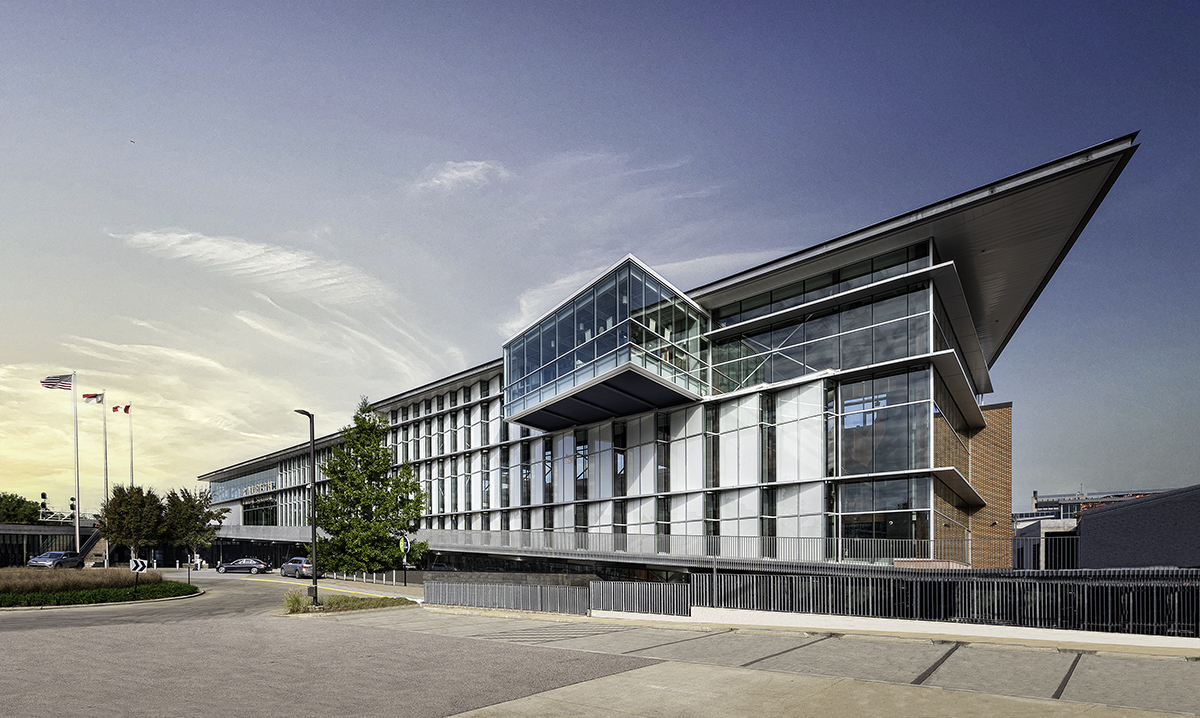The Role of Architectural Photography in Showcasing Modern Transportation Hubs
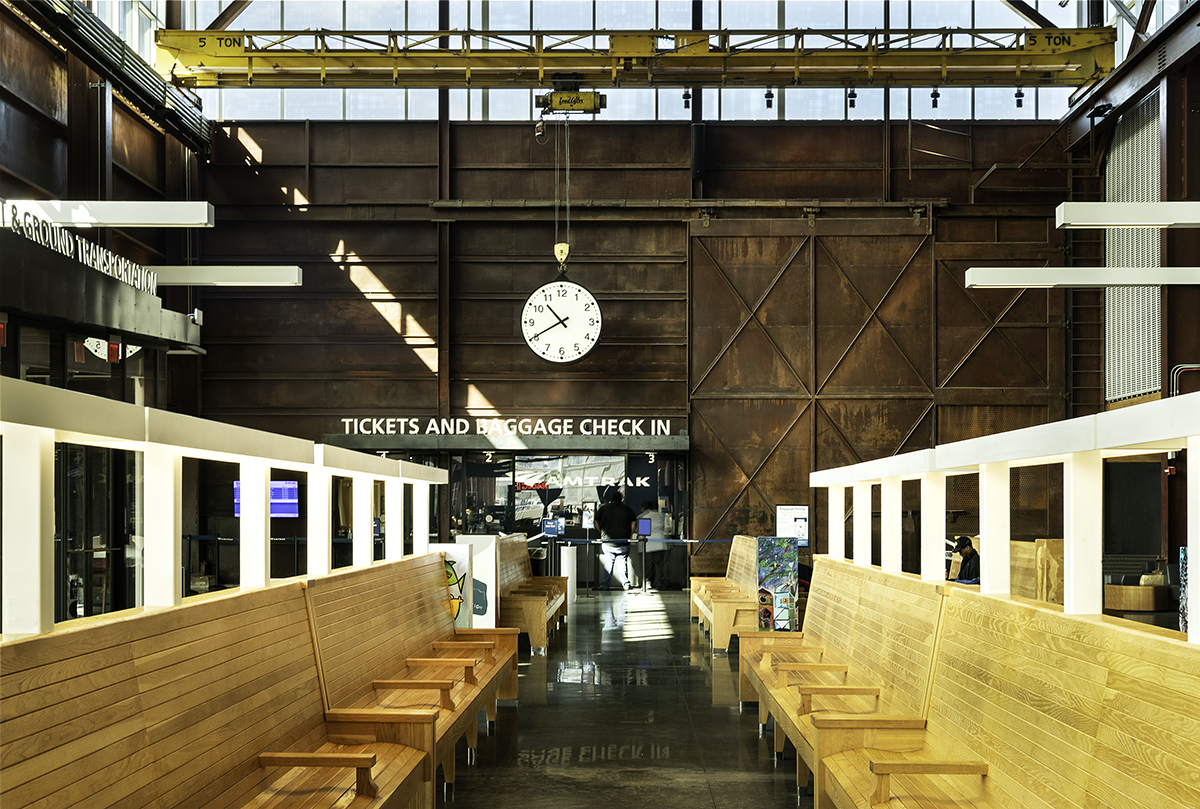
Raleigh Union Station stands as a remarkable architectural landmark in the heart of Raleigh, NC, showcasing the city’s commitment to innovative design and modern infrastructure. As one of Raleigh’s premier transportation hubs, this station combines functionality with contemporary aesthetics, making it a prominent symbol of the city’s growth and urban development.
Raleigh Union Station was designed by the architecture firm Clearscapes, based in Raleigh, NC. The project was a collaborative effort between Clearscapes and engineering firm STV, with Clearscapes focusing on the architectural design, which blends historical elements with modern, functional aesthetics.
The station’s design emphasizes open space, natural light, and integration with the surrounding urban environment, making it a standout example of contemporary public infrastructure in Raleigh.
Architectural photography plays a vital role in capturing the essence of such modern transportation centers, preserving their design and atmosphere for both historical documentation and promotional purposes.
For an architectural photographer, documenting Raleigh Union Station highlights the station’s architectural features while demonstrating the power of transportation hub photography in conveying the structure’s impact and significance within the city.
Architectural Highlights of Raleigh Union Station
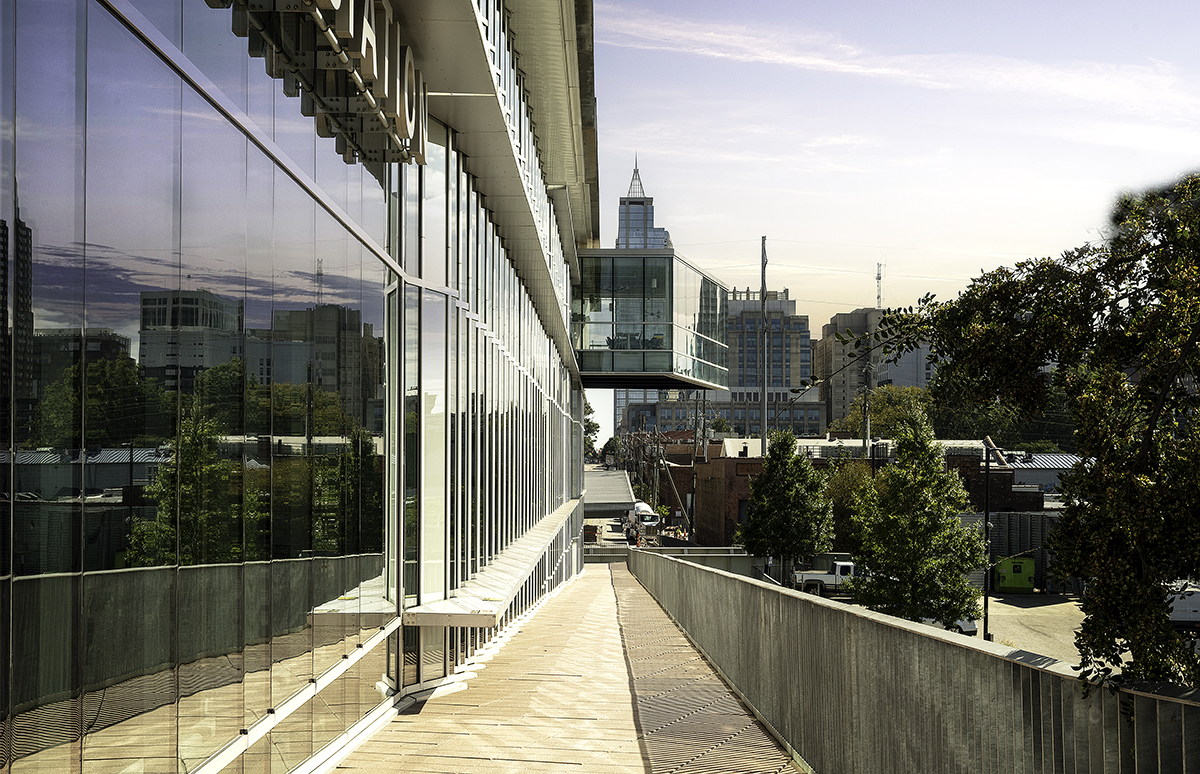
Raleigh Union Station is a striking example of modern urban architecture, featuring a seamless blend of glass, steel, and open spaces. The design emphasizes transparency and openness, capturing natural light and creating a welcoming environment for passengers.
The extensive use of glass walls showcases the city’s skyline, while steel elements offer strength and an industrial aesthetic, reflecting Raleigh’s heritage and its vision for the future.
Overview of Raleigh Union Station's Design Elements:
Raleigh Union Station is a striking example of modern urban architecture, featuring a seamless blend of glass, steel, and open spaces. The design emphasizes transparency and openness, capturing natural light and creating a welcoming environment for passengers.
The extensive use of glass walls showcases the city’s skyline, while steel elements offer strength and an industrial aesthetic, reflecting Raleigh’s heritage and its vision for the future.
Key Design Elements Of Raleigh Union Station
1. Use of Glass
Large glass panels form the building’s exterior, allowing sunlight to flood the interior spaces and giving travelers a panoramic view of the city. This transparency creates a sense of connection between the interior and exterior, linking the station to its surroundings. The glass also lends the station a clean, contemporary look, contributing to an atmosphere of openness and accessibility.
2. Steel Structure
Steel beams and frames are central to the station’s aesthetic, providing a strong, industrial feel that complements the modern urban landscape. The use of exposed steel creates a sense of rugged durability while maintaining a refined elegance. These structural elements are both functional and decorative, supporting the expansive glass walls and allowing for large, uninterrupted spaces.
3. Open Spaces
Inside, the design prioritizes open spaces, giving passengers plenty of room to move freely and comfortably. High ceilings and wide corridors enhance the station’s spaciousness, making it feel more like a public gathering place than a traditional transportation hub. The layout encourages easy navigation and flow, improving the overall passenger experience.
The Role of Form and Function in the Station’s Architecture
The design of Raleigh Union Station is a testament to the harmony of form and function. The station is visually impressive, yet every architectural detail serves a practical purpose, contributing to the ease and comfort of passenger movement.
The transparent glass walls, for instance, not only offer aesthetic appeal but also allow natural light to illuminate the space, reducing the need for artificial lighting during the day and creating a warm, inviting environment.
This emphasis on functional beauty directly impacts the passenger experience, making transit through the station feel seamless and enjoyable. The thoughtful layout guides travelers intuitively through the space, reducing congestion and facilitating efficient transitions between different transportation modes.
Challenges of Photographing Large-Scale Architecture
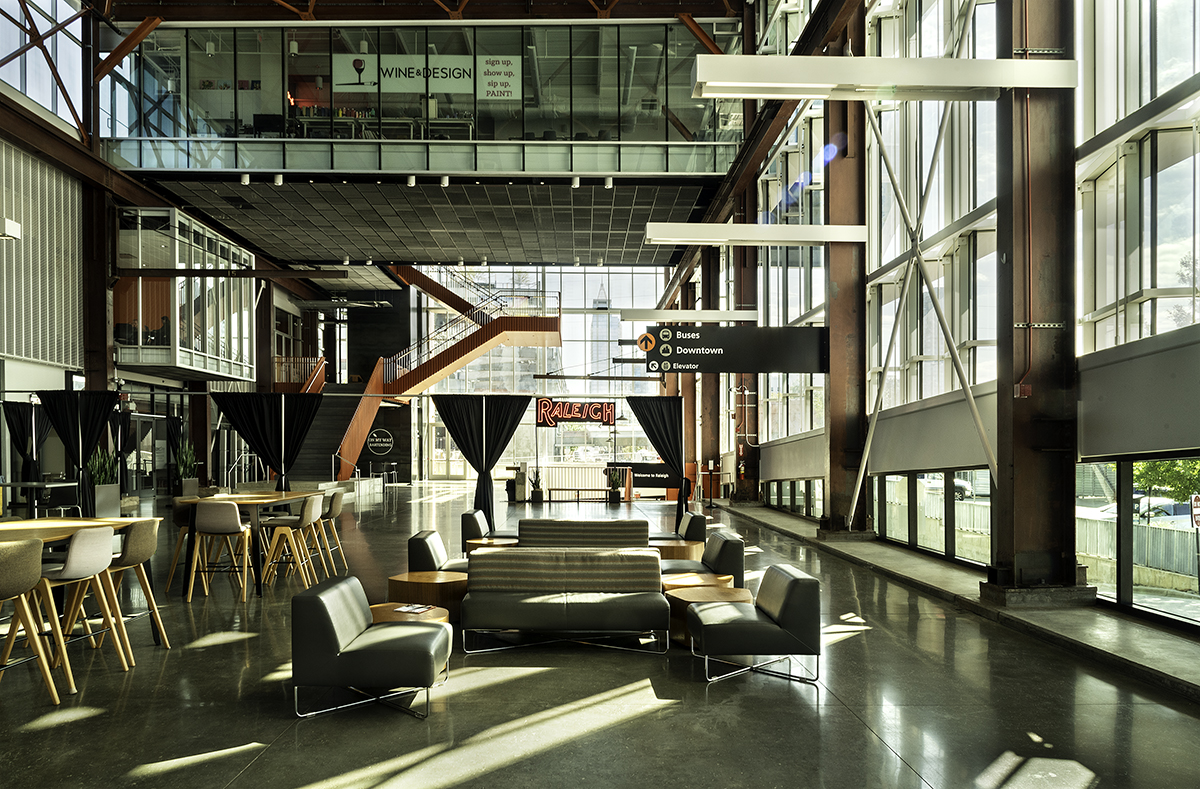
Photographing a large public space like Raleigh Union Station offers unique challenges that highlight the complexity of large-scale architecture photography. Here are some of the primary considerations:
Capturing Scale and Dimension
Large public spaces often convey grandeur and openness, and translating this effectively into a photo requires a thoughtful approach to scale. Techniques such as using wide-angle lenses and experimenting with varied vantage points can help to capture the vastness of the architecture.
Positioning human figures in the frame strategically can provide a relatable point of reference, helping viewers grasp the station’s size and spatial impact.
Managing Lighting Conditions
Large public spaces typically have diverse lighting sources—natural light from expansive windows, overhead artificial lighting, and shadows cast by architectural elements.
In a space like Raleigh Union Station, balancing these sources ensures accurate colors and proper exposure.
Photographing at different times of the day, such as early morning or late afternoon, can enhance natural light and minimize harsh shadows, while adjustments in post-production can enhance color balance and contrast.
Human Interaction and Flow
As a public transit hub, capturing human movement and interaction is essential in conveying the station’s purpose and vibrancy. Strategically timing shots to include people in transit or waiting areas can illustrate the flow and functionality of the design.
Using slower shutter speeds creates a sense of motion that highlights the activity within the space without detracting from the architectural details.
Strategies for Overcoming These Challenges
To tackle these issues and showcase the station’s design, consider:
- Framing and Composition: Focus on architectural photography techniques that emphasize the station’s leading lines and symmetry.
- Layered Shots: Capture multiple layers of the station’s elements, from fore to background, giving depth to the space.
- Highlighting Unique Features: Emphasize distinct design elements like railings, staircases, or unique lighting fixtures to showcase Raleigh Union Station’s architectural identity.
Utilizing Natural and Artificial Lighting to Enhance Architectural Features
Raleigh Union Station, with its striking glass and steel architecture, presents a dynamic interplay of light, both natural and artificial, that can significantly affect how its structural elements are perceived, especially in architectural photography.
Natural Light and Its Interaction with Glass and Steel Elements
The design of Raleigh Union Station prominently features expansive glass walls and skylights, allowing natural light to flood the interior, particularly in the main hall. As the sun moves across the sky, the light interacts with the glass and steel elements in various ways.
During the day, the glass panels allow the sunlight to illuminate the station, creating sharp contrasts of light and shadow on the steel beams, adding texture to the space. The transparent nature of the glass reflects and diffuses the natural light, allowing it to subtly highlight the angular, industrial forms of the steel framing.
In the morning and late afternoon, when the light is softer, it casts warm tones, providing a more inviting atmosphere. The glass also reflects the surrounding cityscape, adding a layer of depth and complexity to the visual experience.
This ever-changing interaction of natural light is a key element in architectural photography of Raleigh Union Station, allowing photographers to capture the evolving mood of the space throughout the day, whether focusing on sweeping views of the station or on smaller, more intimate details of the steel and glass work.
Why Raleigh Union Station is a Photographic Icon
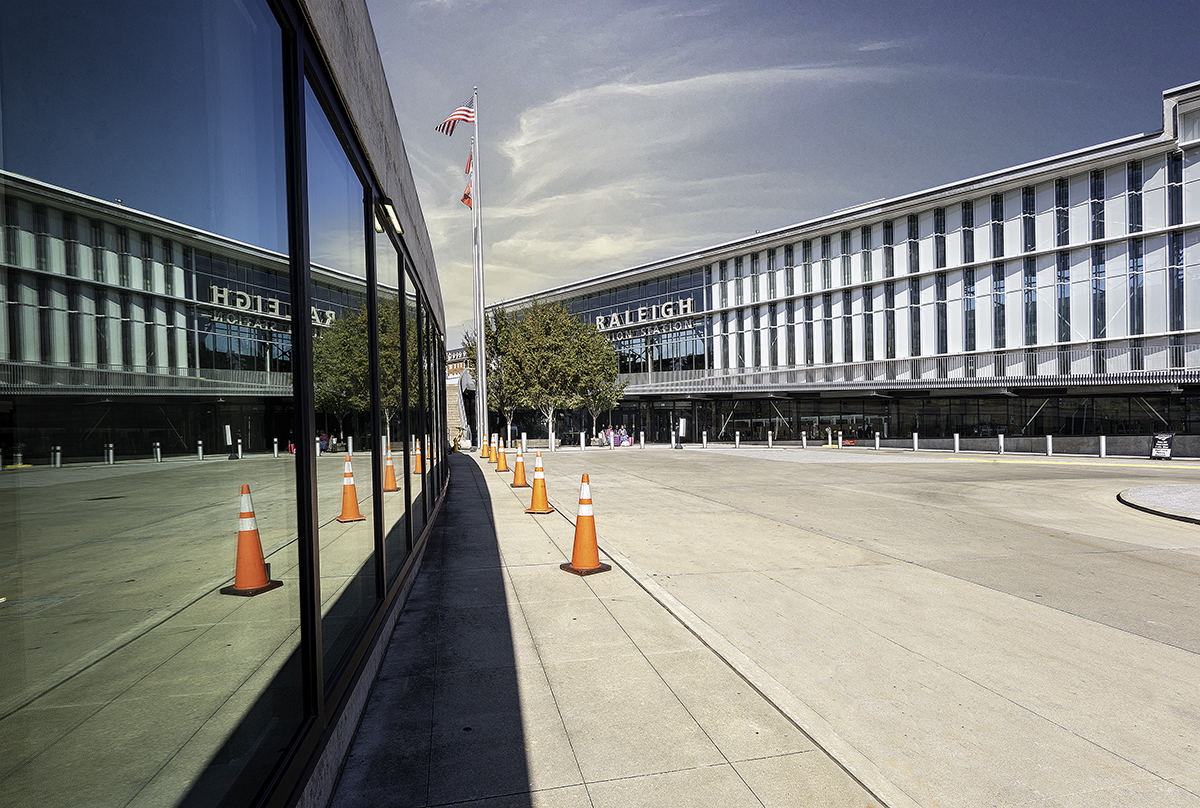
Raleigh Union Station stands as one of the most iconic architectural landmarks in Raleigh, North Carolina. Its contemporary design, blending historic preservation with modern functionality, makes it a standout example of adaptive reuse in urban design.
The building’s sleek, bold lines and transparent glass façade make it a striking subject for architectural photography, capturing both the old and the new in one frame.
The station’s design reflects Raleigh’s transformation into a thriving, dynamic city. With its expansive windows and open spaces, Union Station offers unique opportunities for capturing light, shadow, and reflection, making it a perfect location for any architectural photographer aiming to showcase a city’s character through its buildings.
For an architectural photographer, Raleigh Union Station is not just a structure but an embodiment of a city’s evolving skyline and urban identity.
Why Raleigh Union Station Is An Essential Project For My Portfolio
For any architectural and commercial photographer, capturing Raleigh Union Station is an essential portfolio piece. As an iconic Raleigh photography subject, this landmark offers versatility in how it can be photographed, whether focusing on the grand exterior, the sleek, minimalistic interiors, or the interplay of natural light throughout the building.
It represents a blending of history and modernity that resonates with a wide range of potential clients, from city planners to architectural firms, as well as businesses seeking to portray a modern, professional image.
By adding Raleigh Union Station to my portfolio, I can demonstrate my ability to capture the essence of a significant urban project. Its distinctive features—such as the combination of steel, glass, and brick—require a photographer who understands how to showcase the texture, scale, and aesthetics of such a multifaceted building.
It’s a project that communicates my expertise as an architectural photographer who can handle the challenges of shooting both modern and historical elements in harmony.
Raleigh Union Station
Click Here To View The Full Project Image Gallery

